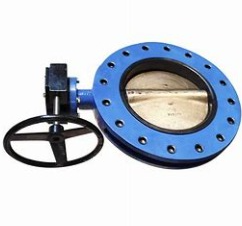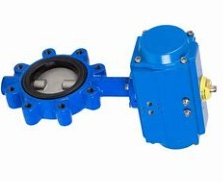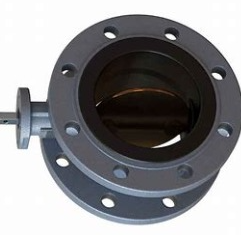Welcome to the world of fluid control efficiency! In this guide, we explore butterfly valve flange types. We also discuss their importance and where they shine. They are used from water treatment to industrial processes. Join us as we break down key features. Assess suitability. We’ll help you choose the right flange for peak performance.
Efficiency is our goal, and butterfly valve flanges are the key to smoother fluid control. Let’s dive in!
What type of connection is a butterfly valve?
A butterfly valve employs a rotational motion to control the flow of fluid through a pipe. This type of valve is known for its quarter-turn operation. It provides a quick and efficient means of regulating fluid flow.
What are the three types of butterfly valves?
1. Wafer-Type Flanges
Wafer-type butterfly valves fit between flanges in a pipeline. They don’t need extra bolts. They are lightweight and compact. This makes them ideal for applications where space is a crucial factor.
2. Lug-Type Flanges
Lug-type butterfly valves have threaded inserts at both ends. This allows them to be installed without using additional flange bolts. This design makes them easy to install and remove. It provides convenience in maintenance and repairs.
3. Double Flanged Butterfly Valves
Double flanged butterfly valves have flanges on both ends. They are suitable for applications where the valve is mounted between two pipelines. They offer stability and robustness, ensuring secure connections in various industrial settings.
Advantages of Butterfly Valve Flanges
A. Streamlining Flow Control
Butterfly valve flanges play a pivotal role. They streamline the control of fluid flow. Their design allows for efficient and precise adjustment. This contributes to optimal performance in various fluid-handling systems.
B. Ease of Installation and Maintenance
Butterfly valve flanges have a standout advantage. This is their ease of installation and maintenance. Their simple design and fewer components make them accessible for quick installation. Routine maintenance tasks can be carried out with efficiency.
Common Applications of Butterfly Valve Flanges
A. Water Treatment Plants
Butterfly valve flanges are widely used in water treatment plants. Control of water flow is critical there. Their adaptability and reliability make them valuable assets. They ensure the efficient treatment and distribution of water.
B. HVAC Systems
Heating, Ventilation, and Air Conditioning (HVAC) systems benefit from butterfly valve flanges. These flanges can regulate the flow of air and fluids. This aids in maintaining optimal conditions for comfort and energy efficiency.
C. Industrial Processes
Butterfly valve flanges play a crucial role in various industrial processes. They manage the flow of liquids and gases. Their versatility and adaptability make them indispensable in industries. They range from chemical plants to manufacturing facilities.
Key Features to Look for in Butterfly Valve Flange Types
A. Material Selection for Durability
Choosing the right material for butterfly valve flanges is essential for ensuring durability. Stainless steel and ductile iron are often preferred materials. They resist corrosion and last a long time.
B. Pressure and Temperature Ratings
Understanding the pressure and temperature requirements of your system is vital. Butterfly valve flanges have appropriate pressure and temperature ratings. This ensures reliable and safe operation in diverse environments.
C. Size and Compatibility Considerations
Selecting the correct size and ensuring compatibility with existing piping systems is crucial. Proper sizing guarantees optimal performance and seamless integration into the overall fluid-handling setup.
Selecting the Right Flange Type for Your Application
A. Assessing System Requirements
A thorough assessment of system requirements is the first step in choosing the right butterfly valve flange type. Consider factors such as flow rates, pressure levels, and the nature of the transported fluid.
B. Matching Flange Types to Operational Needs
Different applications demand specific characteristics. Matching the features of butterfly valve flanges to operational needs ensures that the chosen type aligns perfectly with the requirements of the system.
Comparative Analysis of Wafer vs. Lug vs. Double Flanged Butterfly Valves
A. Performance Characteristics
Comparing the performance characteristics of wafer, lug, and double flanged butterfly valves provides insights into their efficiency, pressure capabilities, and suitability for different operational conditions.
B. Suitability for Different Industries
Each type of butterfly valve flange has its strengths and weaknesses. This makes them suitable for specific industries. Understanding these nuances helps in making informed decisions. It’s based on the unique requirements of different industrial settings.
Main Takeaways
Summing up the exploration into butterfly valve flange types, it’s evident that these components are integral to efficient fluid control systems. The choice of the right flange type is a critical decision. It is important in water treatment, HVAC, and industrial processes. Assessing system requirements, understanding performance characteristics, and considering material compatibility are key factors. They unlock the full potential of butterfly valve flanges. In this decoding journey, we’ve uncovered the significance of these components. They have versatile applications in enhancing operational efficiency across diverse industries.
Post time: Jan-26-2024




